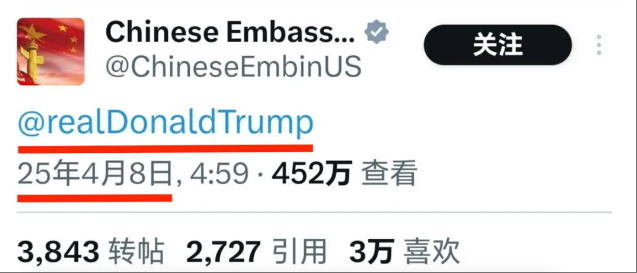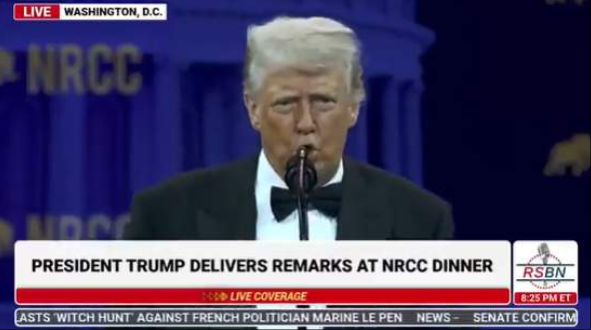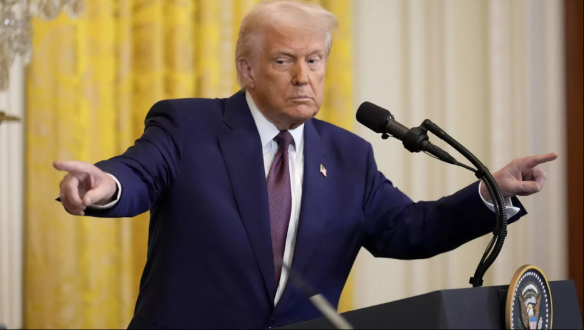“The global economy is at a crossroads” – As April 2025 unfolded, President Trump’s trade policies took volatile turns, sparking unprecedented tensions while revealing fractures in America’s economic dominance. This article decodes the key events, strategic shifts, and geopolitical consequences in clear terms for international audiences.
1. Trump’s Sudden Tariff Reversal: A Strategic Reset?
On April 9, 2025, President Trump shocked markets by announcing a 90-day tariff pause for all nations except China, while cutting base rates to 10%. This abrupt U-turn came just 48 hours after vowing to maintain his hardline “reciprocal tariffs” policy.
Why the Sudden Shift?
The catalyst emerged April 7, when China retaliated against U.S. tariffs by slapping 34% duties on American imports. Trump responded with an ultimatum: “Reduce tariffs by midnight April 8 or face 50% increases.”
China’s response was masterful: At midnight, its U.S. Embassy publicly tagged Trump in a silent social media post – a calculated show of defiance that left the White House cornered.
Escalation Timeline
- April 8: Trump follows through, raising China tariffs to 104%
- Beijing matches with 50% increases on U.S. goods
- Global markets plummet $2.3 trillion in 24 hours
2. The EU’s Pivotal Intervention

Initially, the EU urged de-escalation, fearing trade collapse. But Trump’s April 8 boast that “50 countries are begging for tariff relief” infuriated European leaders already facing public pressure to support China’s firm stance.
The result? On April 9, the EU approved 25% retaliatory tariffs on U.S. goods – a decisive move that forced Trump’s compromise.
Key EU Actions
- Publicly backed China’s “measured response”
- Launched joint infrastructure projects in Southeast Asia
- Announced €400B green energy initiative excluding U.S. firms
3. Economic Reality Checks Trump’s Aggression

Trump’s April 9 reversal aimed to: 1) Appease EU allies 2) Maintain leverage over China. Yet economic realities quickly intervened:
Critical Economic Indicators
- S&P 500 fell 12% post-tariff hike
- U.S. bond yields hit 4.8% – highest since 2007
- June debt ceiling deadline loomed with $6.5T at risk
4. China-EU Strategic Partnership Deepens
On April 10, Beijing and Brussels unveiled a minimum pricing agreement for Chinese electric vehicles – bypassing U.S. tariffs entirely. This marked:
- First direct challenge to U.S. trade dominance since WWII
- Establishment of new Eurasian trade corridors
- Joint R&D initiatives in AI and quantum computing
5. Trump’s Pattern of Failed Policies

Since January 2025, Trump’s initiatives have consistently faltered:
Key Policy Failures
- Ukraine peace plan: Zero progress after “24-hour deadline”
- Budget cuts: Promised $2T, delivered $420B
- H1B visa reforms: Triggered Silicon Valley backlash
- TikTok ban: Extended 7 times without enforcement
Conclusion: Geopolitical Power Shift
As Trump’s tariff strategy unravels, three realities emerge:
- China’s strategic patience outmaneuvered U.S. impulsivity
- EU-China alignment creates new global power axis
- U.S. risks economic isolation through self-inflicted wounds
Final Thought: The trade war’s legacy may not be tariffs, but the acceleration of a multipolar world order.
Key Sources & Further Reading
- Tax Foundation Analysis – Tariff impact on U.S. households
- Penn Wharton Budget Model – Debt ceiling scenarios
- AffairScope Original Reporting – EU-China trade documents
